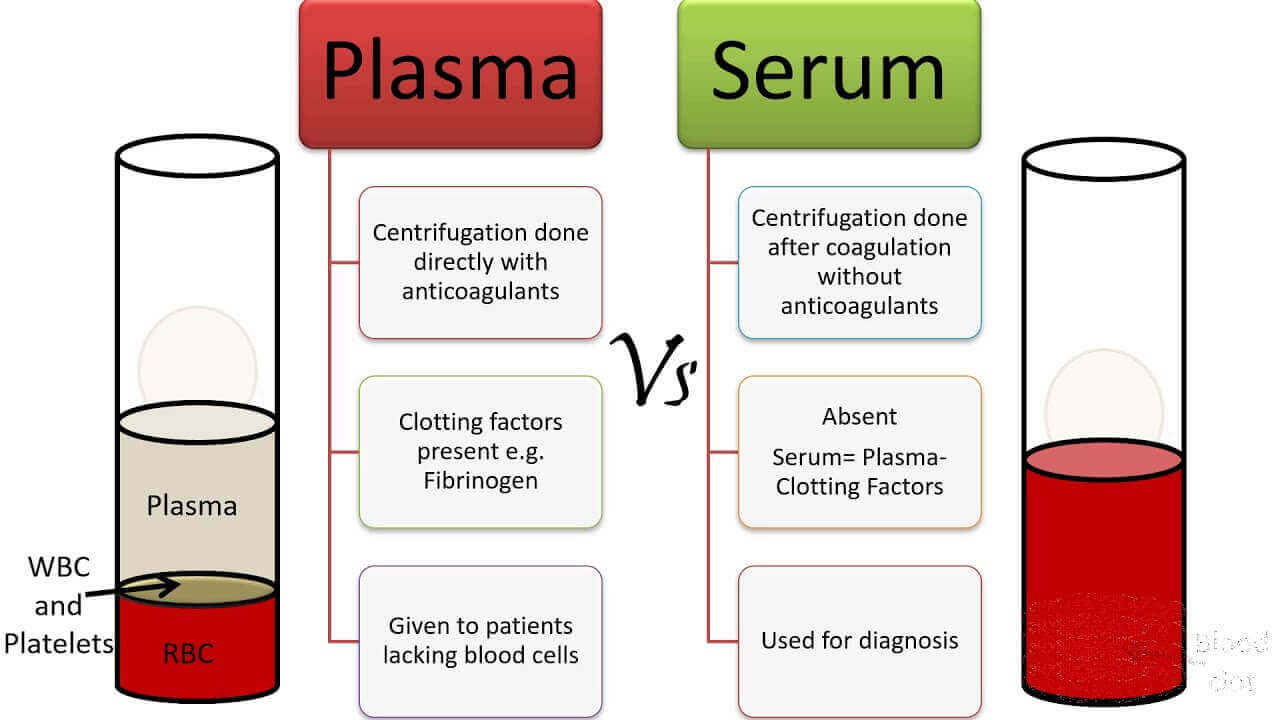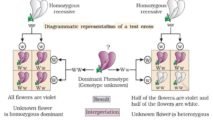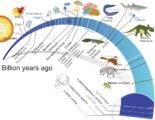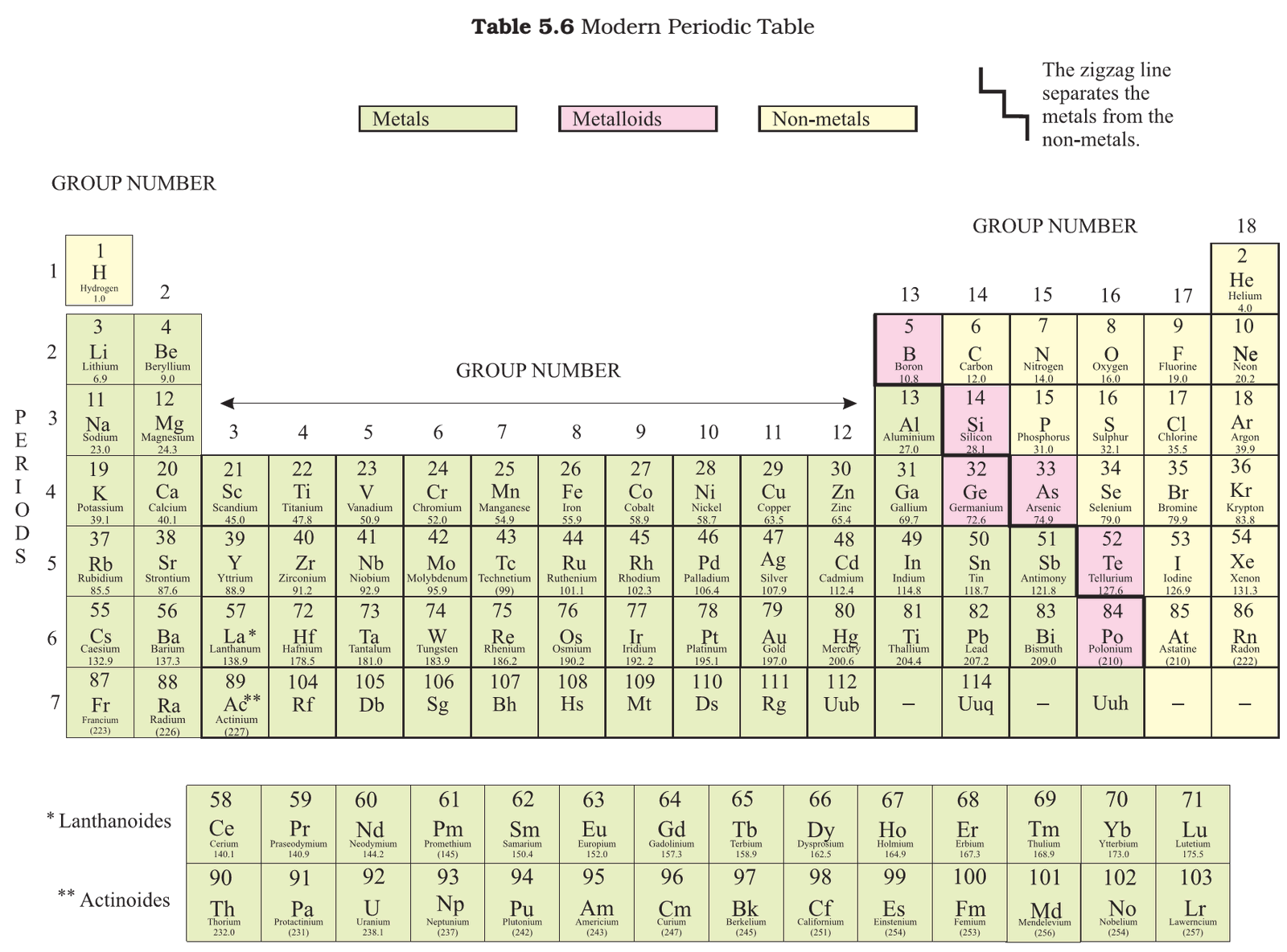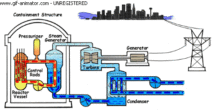
Respiratory System – NCERT General Science
Subscribe to Never Miss an Important Update! Assured Discounts on New Products!
Must Join PMF IAS Telegram Channel & PMF IAS History Telegram Channel
Human Respiratory System – General Science NCERT – Respiration Breathing and Exchange of Gases, Mechanism of Breathing, Mechanism of Breathing.
Respiration – Breathing and Exchange of Gases
- Oxygen (O2) is utilized by the organisms to indirectly break down nutrient molecules like glucose and to derive energy for performing various activities. Carbon dioxide (CO2) which is harmful is also released during the above catabolic reactions. It is, therefore, evident that O2 has to be continuously provided to the cells and CO2 produced by the cells have to be released out. This process of exchange of O2 from the atmosphere with CO2 produced by the cells is called breathing, commonly known as respiration.
Metabolic Pathways
|
- Mechanisms of breathing vary among different groups of animals depending mainly on their habitats and levels of organization.
- Lower invertebrates like sponges, coelenterates, flatworms, etc., exchange O2 with CO2 by simple diffusion over their entire body surface.
- Earthworms use their moist cuticle and insects have a network of tubes (tracheal tubes) to transport atmospheric air within the body.
- Special vascularized structures called gills are used by most of the aquatic arthropods and molluscs whereas vascularised bags called lungs are used by the terrestrial forms for the exchange of gases.
- Among vertebrates, fishes use gills whereas reptiles, birds and mammals respire through lungs. Amphibians like frogs can respire through their moist skin Mammals usually have a well-developed respiratory system.
Human Respiratory System
- We have a pair of external nostrils opening out above the upper lips. It leads to a nasal chamber through the nasal passage. The nasal chamber opens into the pharynx, a portion of which is the common passage for food and air.
- The pharynx opens through the larynx region into the trachea. Larynx is a cartilaginous box which helps in sound production and hence called the sound box.
- During swallowing glottis can be covered by a thin elastic cartilaginous flap called epiglottis to prevent the entry of food into the larynx.
- Trachea is a straight tube which divides into a right and left primary bronchi. Each bronchi undergoes repeated divisions to form the secondary and tertiary bronchi and bronchioles ending up in very thin terminal bronchioles. The tracheae, primary, secondary and tertiary bronchi are supported by incomplete cartilaginous rings.
- Each terminal bronchiole gives rise to a number of very thin, irregular-walled and vascularised bag-like structures called alveoli. The branching network of bronchi, bronchioles and alveoli comprise the lungs.
- We have two lungs which are covered by a double layered pleura, with pleural fluid between them. It reduces friction on the lung-surface. The outer pleural membrane is in close contact with the thoracic lining whereas the inner pleural membrane is in contact with the lung surface.
- The part starting with the external nostrils up to the terminal bronchioles constitute the conducting part whereas the alveoli and their ducts form the respiratory or exchange part of the respiratory system.
- The conducting part transports the atmospheric air to the alveoli, clears it from foreign particles, humidifies and also brings the air to body temperature. Exchange part is the site of actual diffusion of O2 and CO2 between blood and atmospheric air.
- The lungs are situated in the thoracic chamber which is anatomically an air-tight chamber. The thoracic chamber is formed dorsally by the vertebral column, ventrally by the sternum [breastbone], laterally by the ribs and on the lower side by the dome-shaped diaphragm.
- The anatomical setup of lungs in thorax is such that any change in the volume of the thoracic cavity will be reflected in the lung (pulmonary) cavity. Such an arrangement is essential for breathing, as we cannot directly alter the pulmonary volume.
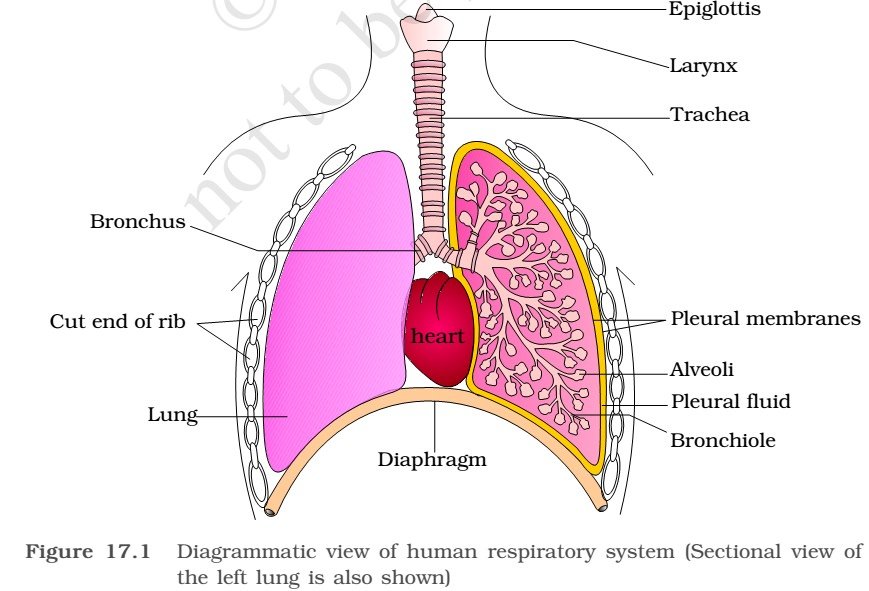
Respiration involves the following steps:
- Breathing or pulmonary ventilation by which atmospheric air is drawn in and CO2 rich alveolar air is released out.
- Diffusion of gases (O2 and CO2) across alveolar membrane.
- Transport of gases by the blood.
- Diffusion of O2 and CO2 between blood and tissues.
- Utilisation of O2 by the cells for catabolic reactions and resultant release of CO2.
Mechanism of Breathing
- Breathing involves two stages: inspiration during which atmospheric air is drawn in and expiration by which the alveolar air is released out.
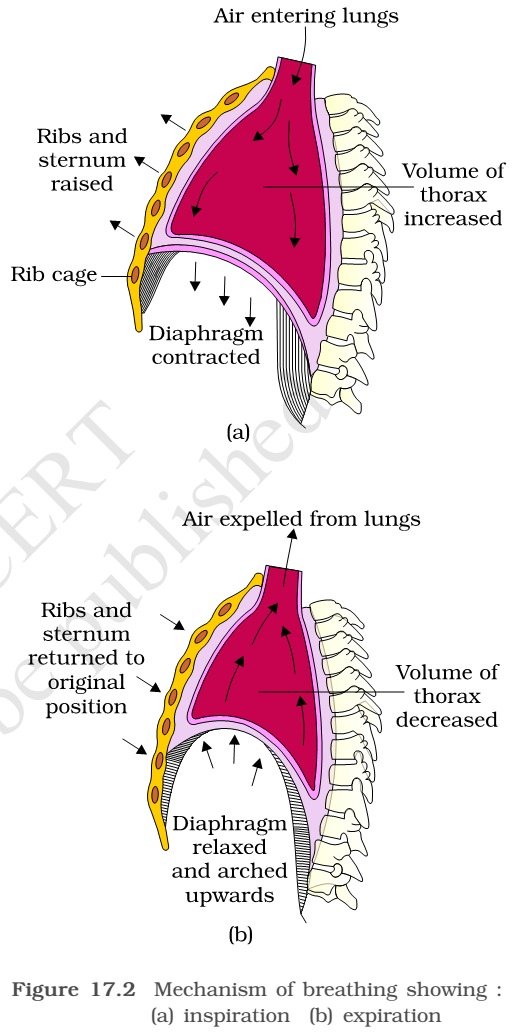
- The movement of air into and out of the lungs is carried out by creating a pressure gradient between the lungs and the atmosphere.
- Inspiration can occur if the pressure within the lungs (intra-pulmonary pressure) is less than the atmospheric pressure, i.e., there is a negative pressure in the lungs with respect to atmospheric pressure. Similarly, expiration takes place when the intra-pulmonary pressure is higher than the atmospheric pressure.
- The diaphragm and a specialized set of muscles – external and internal intercostals between the ribs, help in generation of such gradients.
- Inspiration is initiated by the contraction of diaphragm which increases the volume of thoracic chamber in the antero-posterior axis. The contraction of external inter-costal muscles lifts up the ribs and the sternum causing an increase in the volume of the thoracic chamber in the dorso-ventral axis. The overall increase in the thoracic volume causes a similar increase in pulmonary volume.
- An increase in pulmonary volume decreases the intra-pulmonary pressure to less than the atmospheric pressure which forces the air from outside to move into the lungs, i.e., inspiration.
- Relaxation of the diaphragm and the inter-costal muscles returns the diaphragm and sternum to their normal positions and reduce the thoracic volume and thereby the pulmonary volume. This leads to an increase in intra-pulmonary pressure to slightly above the atmospheric pressure causing the expulsion of air from the lungs, i.e., expiration. We have the ability to increase the strength of inspiration and expiration with the help of additional muscles in the abdomen.
- On an average, a healthy human breathes 12-16 times/minute. The volume of air involved in breathing movements can be estimated by using a spirometer which helps in clinical assessment of pulmonary functions.
Exchange of Gases
- Alveoli are the primary sites of exchange of gases. Exchange of gases also occur between blood and tissues. O2 and CO2 are exchanged in these sites by simple diffusion mainly based on pressure/concentration gradient.
- Partial pressure of gasses, Solubility of the gases as well as the thickness of the membranes involved in diffusion are some important factors that can affect the rate of diffusion.
- Pressure contributed by an individual gas in a mixture of gases is called partial pressure.

Transport of Gases
- Blood is the medium of transport for O2 and CO2.
- About 97 per cent of O2 is transported by RBCs in the blood. The remaining 3 per cent of O2 is carried in a dissolved state through the plasma.
- Nearly 20-25 per cent of CO2 is transported by RBCs whereas 70 per cent of it is carried as bicarbonate. About 7 per cent of CO2 is carried in a dissolved state through plasma.
Transport of Oxygen
- Haemoglobin is a red coloured iron containing pigment present in the RBCs. O2 can bind with haemoglobin in a reversible manner to form oxyhaemoglobin.
- Each haemoglobin molecule can carry a maximum of four molecules of O2. Binding of oxygen with haemoglobin is primarily related to partial pressure of O2.
- Partial pressure of CO2, hydrogen ion concentration and temperature are the other factors which can interfere with this binding.
Transport of Carbon dioxide
- CO2 is carried by haemoglobin as carbamino-haemoglobin (about 20-25 per cent). This binding is related to the partial pressure of CO2. Partial pressure of O2 is a major factor which could affect this binding. RBCs contain a very high concentration of the enzyme, carbonic anhydrase and minute quantities of the same is present in the plasma too. Nearly 70 per cent of carbon dioxide is transported as bicarbonate (HCO3) with the help of the enzyme carbonic anhydrase.
- At the tissue site where partial pressure of CO2 is high due to catabolism [the breakdown of complex molecules in living organisms to form simpler ones, together with the release of energy], CO2 diffuses into blood (RBCs and plasma) and forms HCO3 and H+-.
- At the alveolar site where pCO2 is low, the reaction proceeds in the opposite direction leading to the formation of CO2 and H2O.
- Thus, CO2 trapped as bicarbonate at the tissue level and transported to the alveoli is released out as CO2. Every 100 ml of deoxygenated blood delivers approximately 4 ml of CO2 to the alveoli.
Regulation of Respiration
- Human beings have a significant ability to maintain and moderate the respiratory rhythm to suit the demands of the body tissues. This is done by the neural system.
- A specialised centre present in the medulla region of the brain called respiratory rhythm centre is primarily responsible for this regulation.
- Another centre present in the pons region of the brain called pneumotaxic centre can moderate the functions of the respiratory rhythm centre. Neural signal from this centre can reduce the duration of inspiration and thereby alter the respiratory rate.
- A chemosensitive area is situated adjacent to the rhythm centre which is highly sensitive to CO2 and hydrogen ions. Increase in these substances can activate this centre, which in turn can signal the rhythm centre to make necessary adjustments in the respiratory process by which these substances can be eliminated.
Disorders of Respiratory System
- Asthma: Asthma is a difficulty in breathing causing wheezing due to inflammation of bronchi and bronchioles.
- Emphysema: Emphysema is a chronic disorder in which alveolar walls are damaged due to which respiratory surface is decreased. One of the major causes of this is cigarette smoking.
- Occupational Respiratory Disorders: In certain industries, especially those involving grinding or stone-breaking, so much dust is produced that the defense mechanism of the body cannot fully cope with the situation. Long exposure can give rise to inflammation leading to fibrosis (proliferation of fibrous tissues) and thus causing serious lung damage. Workers in such industries should wear protective masks.




![PMF IAS Environment for UPSC 2022-23 [paperback] PMF IAS [Nov 30, 2021]…](https://pmfias.b-cdn.net/wp-content/uploads/2024/04/pmfiasenvironmentforupsc2022-23paperbackpmfiasnov302021.jpg)

